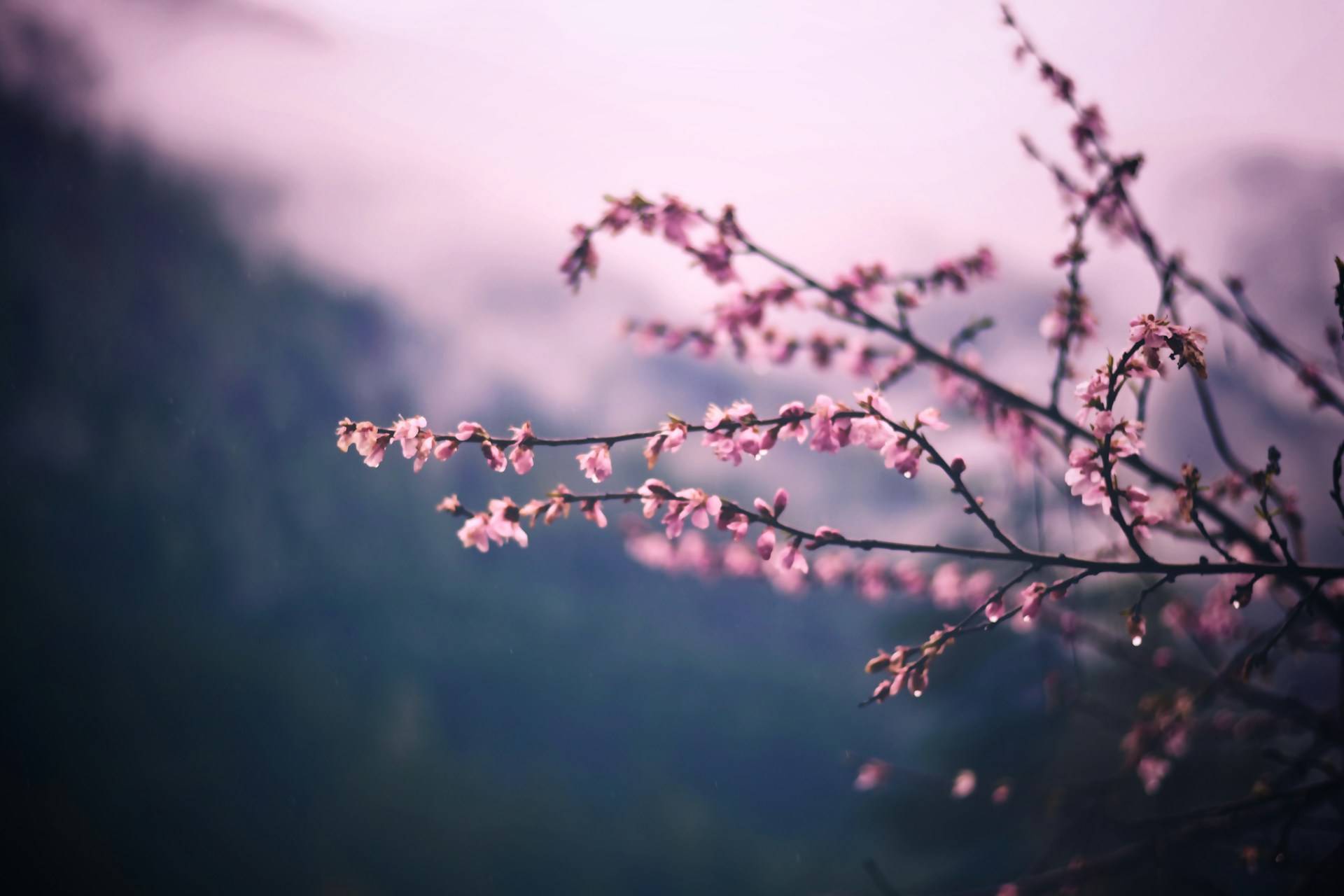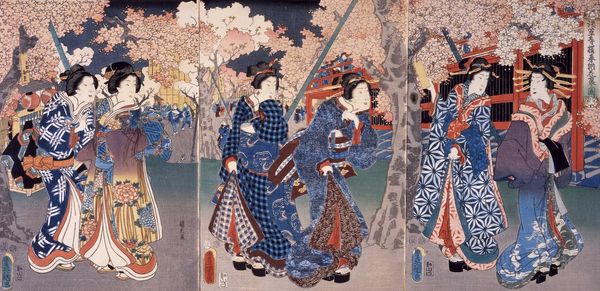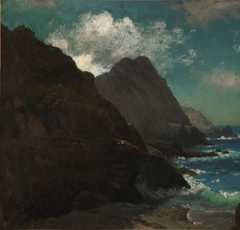
Mono No Aware: Beauty and Impermanence in Japanese Philosophy
The classical Japanese idiom mono no aware denotes an emotional connection to the world — and the ephemeral nature of everything in it.

For a few short weeks each year, cherry blossoms bloom in Japan. Astonishing pinks burgeon across parks and gardens; admiring picnickers gather in shaded viewing spots; the sakura trees stand glittering and resplendent in the spring sunshine.
But then, as quickly as they arrive, the blossoms begin to fall.
Petals are carried away by the wind. Proud branches are stripped of color. The blazing glory of the bloom disappears from the world…
For over one thousand years, the people of Japan have held feasts and parties during the brief annual bloom of the cherry blossoms.
This traditional custom of hanami (literally: flower-viewing) celebrates not just the visual beauty of the blossoms, but glorifies their transience.

Cherry blossoms tend to fall within a week of appearing. Accordingly, they perfectly encapsulate the Japanese idiom mono no aware, which typically translates as ‘the pathos of things’, expressing the power objects have in evoking feelings of impermanence and the passing of time.
In other words: mono no aware denotes an emotional connection to the world — and the ephemeral nature of everything in it.
Facing impermanence
In much classical Japanese art and philosophy (influenced as it is by Buddhism), flux marks the fundamental condition of existence: everything is centered around change.
The epic Tale of the Heike, for example, compiled prior to 1330, begins with the following famous lines:
The sound of the Gion shōja bells echoes the impermanence of all things; the color of the sōla flowers reveals the truth that the prosperous must decline. The proud do not endure, they are like a dream on a spring night; the mighty fall at last, they are as dust before the wind. (Translation: Helen McCullough, 1988)
While impermanence may carry negative connotations — making us longing or wistful for times gone by — in classical Japanese culture it’s also an imbuer of beauty: things are beautiful because they won’t be here forever.
As the Japanese monk Kenkō puts it in his Essays in Idleness, written between 1330 and 1332:
If man were never to fade away like the dews of Adashino, never to vanish like the smoke over Toribeyama, how things would lose their power to move us! The most precious thing in life is its uncertainty. (Translation: Donald Keene, 1967)
In another passage — reminiscent of the Roman philosophers Seneca on the shortness of life, and Lucretius on our fear of death — Kenkō urges us to comprehend impermanence and live now:
How is it possible for men not to rejoice each day over the pleasure of being alive? Foolish men, forgetting this pleasure, laboriously seek others; forgetting the wealth they possess, they risk their lives in their greed for new wealth. But their desires are never satisfied. While they live they do not rejoice in life, but, when faced with death, they fear it — what could be more illogical?
In one concise email each Sunday, I break down a famous idea from philosophy. You get the distillation straight to your inbox:
💭 One short philosophical email each Sunday. Unsubscribe any time.
Rather than letting it sink us into despair, then, Kenkō suggests we grasp impermanence as a call to action:
It does not matter how young or strong you may be, the hour of death comes sooner than you expect. It is an extraordinary miracle that you should have escaped to this day; do you suppose you have even the briefest respite in which to relax?
The right kind of action is unlikely to occur, however, without proper understanding of impermanence — without a deep sensitivity to mono no aware.
Cultivating mono no aware
The 18th-century Japanese philosopher and literary critic Motoori Norinaga popularized the phrase mono no aware in his analysis of 11th-century noblewoman Murasaki Shikibu’s The Tale of Genji, thought to be one of the world’s first novels.
Shikibu’s brilliance, Norinaga notes, lies in her evocation of life’s ephemeral nature — her descriptions and characters are centered totally around the theme of impermanence, allowing readers to share in this profound sense of mono no aware.
The more we recognize mono no aware in the world around us, the closer we get to experiencing and developing a shrewd understanding of reality’s true nature.
While great art captures the wistful feeling of mono no aware, cultivating a sensitivity to it is up to us. Norinaga writes:
To know mono no aware is to discern the power and essence, not just of the moon and the cherry blossoms, but of every single thing existing in this world, and to be stirred by each of them.
Indeed, feeling rueful when the cherry blossoms fall is just the beginning: it evidences our basic emotional connection to the world.
Evolving from there means truly comprehending the flowers’ fate — a sudden arrival, a radiant glow, a disappearance — as the beautiful fate of us all.
As those picnicking under the sakura trees know: the brief glory of life is not to be mourned, alone and in private; rather, in the small window of time we share, it is to be experienced, memorialized, and revered — together.
What do you make of this analysis?
- Do you think beauty is magnified by impermanence? What examples do you see in art, culture, and nature?
- If the basic condition of existence is change, does that mean happiness requires us to internalize and embrace impermanence?
- Or can we live good lives even while railing against the transience of all we hold dear?
Learn more about impermanence in philosophy
If you’re interested in learning more about impermanence and Buddhist philosophy, you might enjoy the following related reads:
- Anicca: Our Collective Way of Life Won’t Exist Soon
- The Last Time Meditation: a Stoic Tool for Living in the Present
- Finding Rapture in the Humdrum: Cultivating Wonder for Everyday Life
- Arne Næss’s Deep Ecology: Reevaluating Our Place in Nature
- Seneca On Coping with the Shortness of Life
- Anātman, the Buddhist Doctrine of No-Self: Why ‘You’ Do Not Really Exist
- The Buddha’s Four Noble Truths: the Cure for Suffering
Finally, if you enjoyed this article, you might like my free Sunday breakdown. I distill one piece of wisdom from philosophy each week; you get the summary delivered straight to your email inbox, and are invited to share your view. Consider joining 25,000+ subscribers and signing up below:

From the Buddha to Nietzsche: join 25,000+ subscribers enjoying my free Sunday Breakdown
In one concise email each Sunday, I break down a famous idea from philosophy. You get the distillation straight to your inbox.
💭 One short philosophical email each Sunday. Unsubscribe any time.
About the Author

Get one mind-opening philosophical idea distilled to your inbox every Sunday (free)

From the Buddha to Nietzsche: join 25,000+ subscribers enjoying a nugget of profundity from the great philosophers every Sunday:
★★★★★ (100+ reviews for Philosophy Break). Unsubscribe any time.

Take Another Break
Each break takes only a few minutes to read, and is crafted to expand your mind and spark your philosophical curiosity.





